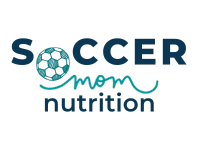Luteal Phase Foods to Fuel Your Body: A Guide for Female Athletes
For female athletes, optimizing your nutrition with luteal phase foods to support peak performance and overall well-being is key. During the luteal phase, the second half of your menstrual cycle, you’ll experience hormonal changes and potential discomfort.
What foods should you eat to help you feel good and maintain your performance during the luteal phase?
The luteal phase is a time when many females experience changes in their energy levels, appetite and cravings. This can make it difficult to eat a healthy diet and maintain peak performance.
In this blog post, we’ll explore the power of luteal phase foods, providing essential nutrients to support your athletic goals.
Learn how to adjust your diet and training to conquer your goals and stay at the top of your game throughout this phase.

Please note that this article contains affiliate links. If you click one of these links and make a purchase, we may earn a commission. As an Amazon Associate, we earn from qualifying purchases.
Understanding the luteal phase
During the luteal phase fat and protein metabolism increases, which means you burn more calories and your appetite might increase. (1)
This increased metabolism of fat and protein during the luteal phase means you may benefit from adjusting your diet to support these changes in energy utilization and caloric expenditure.
Including some luteal phase foods can help your body respond to the increased use of fat and protein as energy sources, reduce cravings, prevent bloating, support your immune system, manage inflammation and enhance your mood and cognitive function.
Best luteal phase foods
To fuel your body effectively during this phase, include luteal phase foods rich in protein, fat, magnesium, calcium, vitamin D and omega-3 fatty acids.
- Protein: Protein is essential for building and repairing muscle tissue, and it can also help to keep you feeling full. Good sources of protein include eggs, chicken, fish, tofu, beans and nuts.
- Healthy fats: Healthy fats are a great source of energy and can help to improve your mood and cognitive function. Good sources of healthy fats include avocados, nuts, seeds and oily fish such as salmon.
- Complex carbohydrates: Complex carbohydrates are a slow-burning source of energy that can help to keep you feeling satisfied for longer. Good sources of complex carbohydrates include whole grains, fruits and vegetables.
- Magnesium: Magnesium is an important mineral that helps to regulate blood sugar levels, reduce pain from cramping and reduce fatigue. Good sources of magnesium include dark leafy greens, nuts and seeds.
- Calcium: Calcium is another important mineral that helps to build and maintain strong bones and muscles. Good sources of calcium include dairy products, leafy green vegetables and fortified foods.
- Vitamin D: Vitamin D is essential for absorbing calcium, and it also has a number of other health benefits. Good sources of vitamin D include sunlight, oily fish and fortified foods.
- Tart cherry juice: Tart cherry juice is a good source of antioxidants and melatonin, which can help to improve sleep quality and reduce inflammation. Tart cherry juice can help to reduce muscle soreness during the luteal phase. (2)
Increased appetite and snacking during the luteal phase
It’s common to experience an increased appetite during the luteal phase. This is due to the changes in hormones that occur during this phase. Progesterone, one of the main hormones that rises during the luteal phase, can increase your appetite and cravings.
If you’re experiencing an increased appetite during the luteal phase, there are a few things you can do to help meet your body’s energy requirements:
- Increase portion size: If you’re already eating healthy, nutritious meals, you may simply need to increase the portion size of your meals. This can help you feel more satisfied and prevent you from overeating later in the day.
- Increase meal/snack frequency: Instead of eating three large meals per day, try eating 4-5 smaller meals or snacks throughout the day. This will help keep your blood sugar levels stable and prevent you from getting too hungry.
- Increase intake of nuts and seeds: Nuts and seeds are a great source of healthy fats, protein, and fiber. They can help you feel full and satisfied, and they’re also a good source of nutrients that are important during the luteal phase.
- Add “extras”: If you’re looking for a way to add a few extra calories to your meals or snacks, try adding “extras” like olive oil, nut butters, cheese, cream cheese, avocado, or 2% or whole fat dairy products.
It’s important to listen to your body and eat when you’re hungry. However, it’s also important to be mindful of your portion sizes and to choose healthy, nutritious foods.
Tips to manage appetite
Here are some additional tips for managing your appetite during the luteal phase:
- Eat breakfast: Skipping breakfast can lead to increased hunger later in the day. Make sure to eat a healthy breakfast that includes protein, fiber and complex carbohydrates.
- Get enough sleep: When you’re well-rested, you’re likely to make healthier choices. Aim for 7-8 hours of sleep per night.
- Manage stress: Stress can increase your appetite. Find healthy ways to manage stress, such as exercise, yoga or meditation.
By following these tips, you can manage your appetite during the luteal phase and stay on track with your health and fitness goals.
Hydration and electrolytes during the luteal phase
Staying hydrated is essential for overall health and well-being, but it’s especially important during the luteal phase.
This is because increased levels of progesterone can lead to water retention, which can make you feel bloated and uncomfortable.
Additionally, the increased sweat rate that can occur during the luteal phase can lead to dehydration. (3 )
To stay hydrated, it’s important to drink plenty of fluids throughout the day. Water is the best choice, but you can also drink other fluids such as unsweetened tea, flavored water, high protein milk and fruit juice.
If you’re exercising, it’s important to drink even more fluids to replace the fluids and electrolytes you lose through sweat.
If you have questions about staying hydrated during the luteal phase, talk to your doctor or a registered sports dietitian nutritionist. They can help you create a hydration plan that’s right for you.
Here are some additional tips for staying hydrated during the luteal phase:
- Drink plenty of fluids throughout the day, even if you don’t feel thirsty.
- Avoid sugary drinks, as they can dehydrate you.
- Eat plenty of fruits and vegetables, since they’re a good source of water and electrolytes.
- Drink sports drinks or electrolyte supplements if you’re exercising.
- Listen to your body and drink more fluids if you feel thirsty or fatigued.
By following these tips, you can stay hydrated and healthy during the luteal phase.
Adjusting training during the luteal phase
During the luteal phase, since fat and protein are more readily used as fuel sources, you may find it’s easier to participate in lower intensity, longer endurance activities. However everyone is different and you need to pay attention to your body during this time. (https://pubmed.ncbi.nlm.nih.gov/20199120/)
Here are some additional research-backed benefits of exercising during the luteal phase:
- Reduces fatigue: Exercise can help to reduce fatigue and improve energy levels during the luteal phase.
- Improves mood: Exercise can help to improve mood and reduce irritability during the luteal phase.
- Eases pain: Exercise can help to ease pain and discomfort associated with premenstrual syndrome (PMS).
- Improves sleep: Exercise can help to improve sleep quality and reduce insomnia during the luteal phase.
By following these tips, you can stay active and healthy during the luteal phase.
Conclusion
Fueling your body with luteal phase foods is the key to unleashing your potential as a female athlete.
With both estrogen and progesterone elevated and an increased metabolism of fat and protein, it’s essential to adapt your nutrition and training to support your body’s changing needs during this phase.
By embracing nutrient-rich options, staying well-hydrated, and adjusting your training, you’ll conquer your athletic goals with ease throughout your menstrual cycle.
For more information on how to fuel in the follicular phase, check out our latest post.
*This is an informational post and not medical advice.
Stephanie Magill, MS, RD, CD, FAND has over 22 years of experience in public health and nutrition. As a performance registered dietitian nutritionist, Stephanie specializes in sports nutrition and provides simple and actionable information so that athletes can be well fueled for high performance on and off the field. Stephanie has a Master’s Degree in Nutrition and is a Fellow of the Academy of Nutrition and Dietetics.

